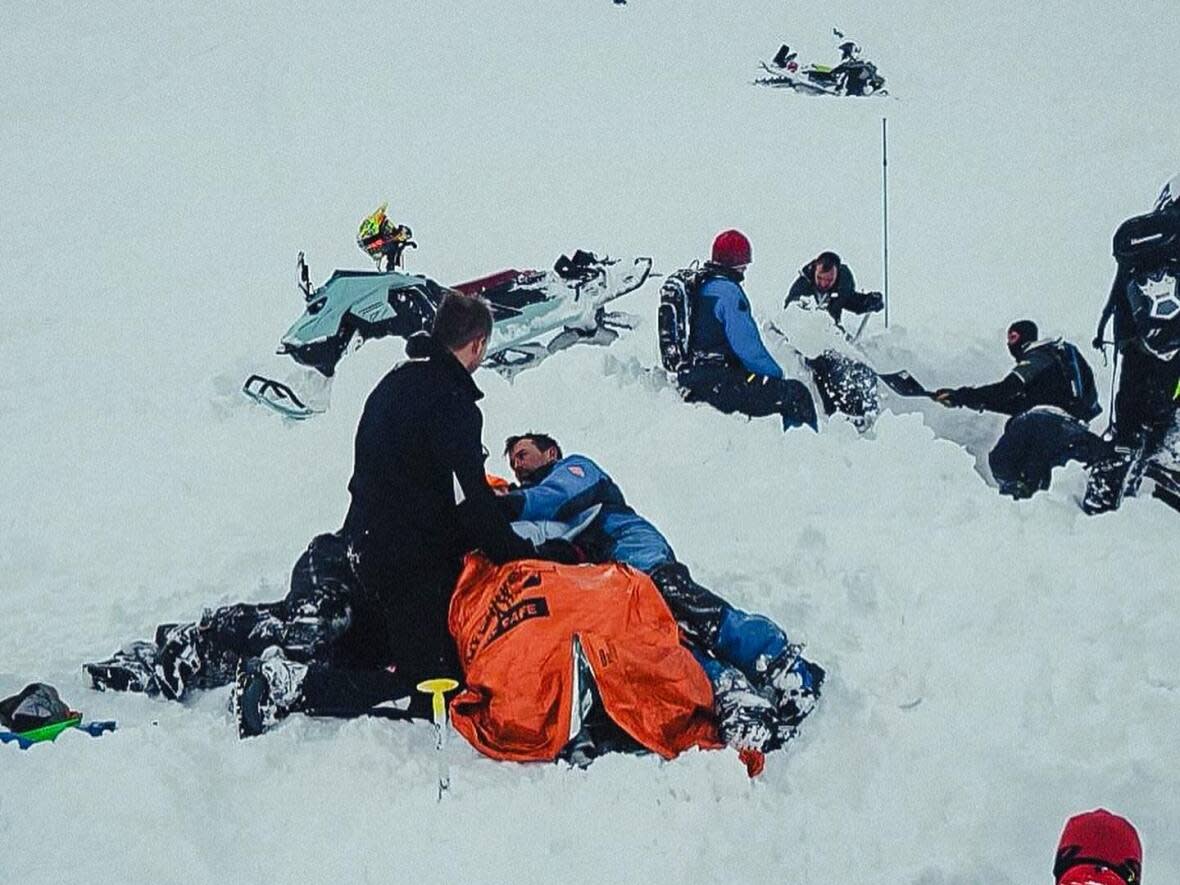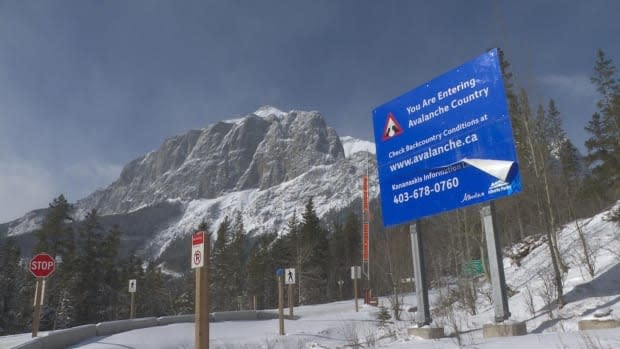Tour guide rescues man from avalanche near Revelstoke, B.C.

A tour guide is being hailed a hero because of his fast actions pulling a man to safety after a group of snowmobilers got hit by an avalanche earlier this week.
Olivier Meilleur was heading down Boulder Mountain in Revelstoke, B.C., about 565 kilometres northeast of Vancouver, after a day of sledding when he noticed a group of men frantically searching in the snow.
"I was not too sure what was going on at the beginning," Meilleur told Daybreak South host Chris Walker. "I didn't know, like somebody was buried."
But he sprang into action, helping dig out a man who had been trapped in the snow.
Meilleur works with Great Canadian Tours, which shared the story of the rescue to its Facebook page to raise awareness about backcountry safety. In response, many commenters are touting Meilleur as a hero.
But he says it's simply an example of being prepared for potentially dangerous backcountry conditions.
Trapped for 10 minutes
Meilleur was leading a group when he noticed the distress. He left them in a safe place before heading over to the snowmobilers, whom he says looked like they needed help.
As it turned out, a man was buried under the snow — for about 10 minutes by the time Meilleur arrived, he says.

The man was buried by a size-three avalanche, which Avalanche Canada defines as big enough to bury and destroy a car or a small building, damage a truck, or break a few trees.
Meilleur asked the group if their avalanche beacons were on search mode.
"They told me yes, but we can't find a signal. So right away I took my transceiver out and started doing a transceiver search. And I found [a signal] pretty quick, [but it] was far away."
WATCH | A 2020 video shows a skier survive an avalanche in Revelstoke:
He says the group started to probe the snow in the new area and within about five minutes were able to dig the man out.
Meilleur credits his training and experience as a tour guide for helping save the man's life.
"You make sure there's a leader who's taking charge of the scene and seeing, like, the big pictures."
When the man surfaced, Meilleur says he was blue in the face, experiencing cyanosis, the term given when skin appears blue or purple because of a lack of oxygen.
He and the others put the man flat on his back on the snow, and Meilleur went to retrieve his first aid kit from his backpack.
"When I came back I noticed he gained back his colour ... I checked for a pulse, I couldn't really find the pulse. He was a bit hypothermic, like a bit cold, so I couldn't find a pulse right away … I could find a pulse after I think like 45 seconds or so."
The snowmobile group had sent out an SOS signal as soon as the avalanche hit, so rescue crews arrived quickly.
Meilleur says afterwards, he was in contact with the man who was rescued, and he was without injury.
Rescue highlights importance of preparedness: guide
Meilleur says the ordeal is an example of why training, like the basic Avalanche Skills Training 1 (AST 1) course, is important for people in the backcountry.
"I mean, if I didn't pass by it would have been dead for sure," Meilleur said.
"The problem with that crew is they had all the gear, they just didn't know how to use it properly. So training and taking courses, it's so important out there."
It's especially important as Avalanche Canada has just issued a special warning saying recent storms have resulted in some of the most dangerous backcountry conditions B.C. has seen all season.
Alex Ibbotson, who owns Canada Backcountry Services and teaches avalanche safety and training in B.C., says the current combination of weak layers in the snowpack makes things unpredictable, and it's imperative people have the proper training.
She suggests anyone venturing into the backcountry for recreation in the winter take at least AST 1.
WATCH | How to prepare for backcountry avalanches:
"It will help you to understand what exactly Avalanche Canada's forecasts are saying … but also how to properly use your equipment," Ibbotson said, adding that often people who take the courses with her have never turned on their transceiver before.
"It's definitely not straightforward, intuitive science to be able to follow your transceiver to a signal. So that's something people have to try at least once before they're taking themselves — their family members, their friends, their spouses — out into some hazardous terrain."


